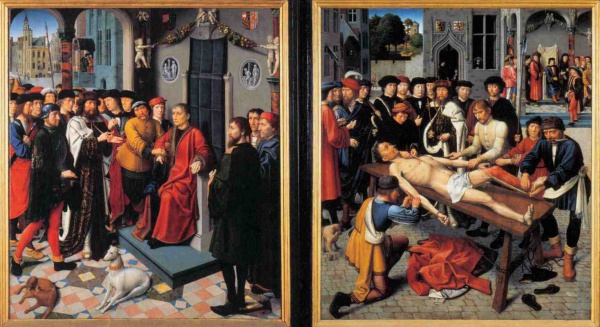Facts About The Judgement of Cambyses
"The Judgement of Cambyses" is a captivating oil-on-wood diptych by Dutch artist Gerard David. It graphically depicts the arrest and grisly punishment of the corrupt Persian judge Sisamnes, as decreed by King Cambyses—a tale chronicled in Herodotus' "Histories." This artwork was commissioned in 1487/1488 by the city officials of Bruges and was intended for display in the deputy burgomaster's room at the town hall.
Initially referred to as "The Last Judgement" in Bruges' records, the diptych, painted on oak panels, served a dual purpose: to promote integrity among magistrates and as a tacit apology for the imprisonment of Maximilian I in Bruges in 1488. A striking scene shows Sisamnes’ son dispensing justice from his father's chair, which is covered with the flayed skin of Sisamnes. This piece significantly diverges from David's typical religious themes.
There are other artworks with similar themes, such as a version by Dirck Vellert from 1542.
Interestingly, "The Judgement of Cambyses" has been utilized in modern protests. In August 2012, supporters of Yulia Timoshenko presented a reproduction of the painting to the judge in her case. Later that year, in November, activists displayed it to Judge Andrey Fedin, who sentenced Maxim Luzyanin in the Bolotnaya Square case. Ukrainian activist Serhiy Sternenko even wore a shirt featuring the painting during his trial at the Shevchenkivsky District Court of Kyiv on June 12, 2020.

 Luxembourg
Luxembourg